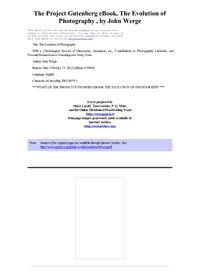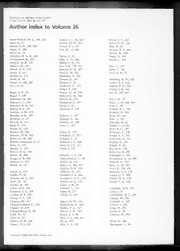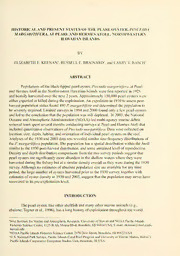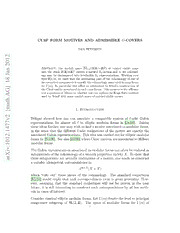
Preview Cusp form motives and admissible $G$-covers
CUSP FORM MOTIVES AND ADMISSIBLE G-COVERS DAN PETERSEN 2 1 0 2 n Abstract. The moduli space M1,n(B(Z/mZ)2) of twisted stable maps a into the stack B(Z/mZ)2 carries a natural S -action and so its cohomol- n J ogy may be decomposed into irreducible S -representations. Working over n 8 SpecZ[1/m] we show that the alternating part of the cohomology of one of 1 itsconnectedcomponentsisexactlythecohomologyassociatedtocuspforms for Γ(m). In particular this offers an alternative to Scholl’s construction of ] G theChowmotiveassociatedtosuchcuspforms. Thisanswersintheaffirma- A tive aquestionofManinonwhetherone canreplacethe Kuga-Satovarieties used by Scholl with some moduli space of pointed stable curves. . h t a m 1. Introduction [ 2 v Deligne showed how one can associate a compatible system of ℓ-adic Galois 7 representations for almost all ℓ to elliptic modular forms in [Del69]. Taking 7 these ideas further, one may wish to find a motive associated to modular forms, 4 1 in the sense that the different ℓ-adic realizations of the motive are exactly the . 2 associated Galoisrepresentations. This idea was carried out for elliptic modular 1 forms by [Sch90]. See also [BR93] where Chow motives areassociated to Hilbert 0 1 modular forms. : v The Galois representations associated to modular forms can often be realized as i X subquotients of the cohomology of a smooth projective variety X. To show that r a these subquotients are actually realizations of a motive, one needs to construct a suitable idempotent correspondence in AdimX(X ×X) which “cuts out” these pieces of the cohomology. The standard conjectures [Kle94] would imply that such correspondences exist in great generality. How- ever, assuming that the standard conjectures will not be proven in the near future, it is still interesting to construct such correspondences by ad hoc meth- ods in cases of interest. Consider classical elliptic modular forms. Let Γ(m) denote the level m principal congruence subgroup of SL(2,Z). The space of modular forms for Γ(m) of 1 2 DANPETERSEN weight n+2 can be found as a subquotient of the cohomology of the nth fibered power of the universal elliptic curve (a Kuga-Sato variety) over the modular curve Y(m). Specifically, one can find in the Betti cohomology the direct sum of the space of holomorphic cusp forms and its complex conjugate, the space of antiholomorphic cusp forms. The corresponding parts of the ℓ-adic cohomology of the variety are the Galois representations associated to the modular forms. To assemble these realizations into a Chow motive one would need first to find a smooth compactification of the nth fibered power of the universal curve. To compactify one can take fibered powers of the universal generalized elliptic curve (in the sense of [DR73]) over X(m); this compactification is however singular at the boundary. A desingularization of the boundary was constructed by Deligne [Del69], and Scholl showed in [Sch90] that the projector given by the ”alternating” representation of the hyperoctahedral group S ≀S = (S ×...×S )⋊S 2 n 2 2 n ntimes (which canonically acts on the nth fi|bered{zpowe}r and its desingularization) cuts out exactly the cohomology coming from cusp forms. Thus there exists a Chow motive associated to cusp forms of given weight for Γ(m). From the point of view of moduli theory, the best possible way to construct a smooth compactification of a moduli problem is to change the definition of the moduli problem to allow also some appropriate degenerations of the ob- jects one is parametrizing. In this sense Deligne’s desingularization is not so natural. Taking the nth fibered power gives you a moduli space of elliptic curves equipped with some level structure, with n + 1 marked points which are allowed to coincide. This suggests the possibility of constructing a smooth compactification by considering pointed stable curves of genus one with some kind of level structure. This suggestion was put forth by Manin in [Man06] and [Man05]. Not only would one then have a modular interpretation of the points on the boundary, but also a space with far more structure: for instance, stable curves have a well understood deformation theory, and they form an operad. (The operadic point of view of stable curves also gets used in this article when computing the contribution from the boundary.) In level one this compactification would just be M . This space is a smooth 1,n+1 and proper stack over Z and its cohomology defines a Chow motive. In [CF06] it is shown, independently of Manin’s question, that the projector given by the alternating representation of S acting on M cuts out exactly the space n+1 1,n+1 of cusp forms for SL(2,Z) of weight n + 2. Thus an alternative to Scholl’s construction is found, which however is only valid for modular forms of level 1 due to a lack of an analogue of the space M for curves with level structure. 1,n+1 CUSP FORM MOTIVES AND ADMISSIBLE G-COVERS 3 Fix a positive integer m and let us always assume that m is invertible on our base scheme. By a level m structure on a smooth curve C, we mean the choice of an isomorphism (Z/mZ)2g(C) ∼= Pic0(C)[m]. To extend Consani and Faber’s construction to higher levels, one would need a smooth and projective moduli space of pointed stable curves with level struc- ture. The problem of constructing such a compactification has a long history. A moduli space M (m) of pointed smooth curves with level structure is easy g,n to construct, in particular as it is a scheme for m ≥ 3. On the boundary, one runs into problems when trying to define a good notion of a level structure on curves not of compact type, i.e. curves whose Jacobian is an extension of an abelian variety by a torus. The problem is roughly that these curves have “too little” m-torsion: for a torus T, the m-torsion group T[m] has order mdimT, while for an abelian variety A the m-torsion group has order m2dimA. When g = 1, n = 1 a good modular compactification is described in [DR73]. In [ACV03] a smooth proper stack compactifying M (m) for any g and n was g,n constructed, seemingly as a byproduct of the work of Abramovich, Vistoli and others on constructing a smooth and projective moduli space of stable maps into a stack. In Section 3 we construct an explicit isomorphism between the stack defined by Deligne and Rapoport and the one defined by Abramovich, Corti and Vistoli when g = 1 and n = 1. Although this is perhaps not so surprising, the author has not seen this observed anywhere in the literature, and the isomorphism is a bit striking. Once we are armed with a smooth and proper moduli space M (m) of pointed g,n stable curves with level m structure, we show in sections 4 and 5 of this paper that Consani and Faber’s construction carries over to this setting as well: the pair of M (m) and the projector given by the alternating representation of S 1,n n defines the Chow motive of cusp formsof weight n+1 for Γ(m). The alternating part of the cohomology of the open part M (m) is exactly the cohomology 1,n coming from all modular forms, i.e. both Eisenstein series and cusp forms. The alternating part of the cohomology of the boundary is isomorphic to the space of Eisenstein series only, and when one computes the cohomology of the total space M (m) the Eisenstein series “cancel” exactly, leaving only the 1,n contribution from cusp forms. Finally in section 6 of the paper we show that in this set-up, the Hecke corre- spondences can be given a modular interpretation over the boundary as well. I am grateful to my advisor Carel Faber for patient discussions. I have also benefitted from useful conversations with Nicola Pagani and Sergey Shadrin. 4 DANPETERSEN 2. Background 2.1. Twisted stable maps, admissible covers and level structures. In [AV02] Abramovich and Vistoli introduced a stack generalizing the Kontse- vich space M (X) of stable maps to a projective variety, namely the stack g,n M (X ) of so called twisted stable maps into a tame Deligne-Mumford stack g,n X with projective coarse moduli space. To this end Abramovich and Vistoli first define the notion of a pointed twisted curve: this is a DM-stack C whose coarse moduli space C is a pointed nodal curve, with the property that C → C is an isomorphism away from the nodes and the marked points, with specific re- strictions on the type of ”stacky” structure C may have. Roughly speaking, the fibers of C → C should all be cyclotomic gerbes. See [AV02] for a precise defi- nition. With this definition in place, there is a proper moduli stack M (X ) g,n parametrising flat families of twisted curves equipped with a representable map to X , such that the induced map of coarse moduli spaces C → X is stable in the sense of Kontsevich. There is an important open and closed substack Mbal(X ) of M (X ) which g,n g,n parametrizes twisted stable maps where the source curve is balanced. These are exactly the twisted curves that are smoothable, i.e. which can be written as stable limits of smooth curves. Let G be a finite group. We assume that |G| is invertible on our base scheme, bal so the classifying stack BG is tame. The specific stack M (BG) has an g,n alternative description in terms of admissible covers, as explained in [ACV03]. Let us make the following definition: Definition 2.1. Let C be a pointed nodal curve and G a finite group. An admissible torsor for G over C consists of a morphism of curves P → C and an action of G on P, such that (1) the curve C is identified with the scheme quotient P/G; (2) the map P → C is an admissible cover; (3) the restriction of P → C away from the nodes and markings of C, with the given G-action, is a torsor for the group G. Then [ACV03] shows that giving a representable morphism from a balanced twisted curve C to BG is canonically the same as giving an admissible G-torsor over the coarse moduli space of C: given C → BG one gets a G-torsor over C whose total space P is a nodal curve, and the composition P → C → C is an admissible torsor; conversely, given an admissible torsor P → C, the stack quotient [P/G] is a balanced twisted curve. CUSP FORM MOTIVES AND ADMISSIBLE G-COVERS 5 Since perhaps most readers are more comfortable with admissible covers than with twisted curves, we shall stick to the language of admissible covers as far as possible in this article. As mentioned in the introduction, the existence of the stack M (BG) allows g,n one to give a modular compactification of the space M (m) of smooth pointed g,n curves with level structure. Let G = (Z/mZ)2g. In particular, we assume m is invertible. Suppose given a smooth curve C and a level m structure on C, that is, a not necessarily symplectic isomorphism Pic0(C)[m] ∼= G. Let π (C) denote 1 the étale fundamental group of C. Since the points of Pic0(C)[m] correspond to cyclic étale covers of degree m of C, one gets an isomorphism Pic0(C)[m] ∼= π (C)/mπ (C), 1 1 and hence a bijection between isomorphisms Pic0(C)[m] ∼= G and surjective morphisms π (C) → G, i.e. connected G-torsors over C. See [SGA1, XIII, 1 2.12]. So the level structure induces a representable map C → BG and when 2−2g −n < 0 we find a morphism M (m) → M (BG). g,n g,n This morphism is not an open immersion. The problem is that every point of M (BG) has G in its automorphism group, coming from the automorphisms g,n of the admissible torsors, while a level structure should generally have no auto- morphisms. This defect is fixed by composing with the rigidification map M (BG) → M (BG)(G g,n g,n (where we follow the notation of [Rom05]), in the sense that the composed map is an isomorphism onto an open substack. The closure of M (m) in g,n M (BG)(G is the desired compactification. g,n The stacks M (BG) and M (BG)( G share the same coarse moduli space g,n g,n [ACV03, Theorem 5.1.5] and in particular they have the same rational and ℓ-adic cohomology. Since in this article we shall only be interested in their cohomology, we propose to ignore the process of rigidification in this article (except in Section 3) as it would mostly be a small nuisance. Thus we define M (m) to be the closure of the image of M (m) already g,n g,n in M (BG). One can describe this closure explicitly: it is the open and g,n closedsubstackofM (BG)consistingofconnectedadmissibleG-torsorswhich g,n are unramified over each marked point. Then M (m) is a smooth [ACV03, g,n Theorem 3.0.2] and proper DM-stack over SpecZ[1/m]. Let ζ be a primitive mth root of unity. The stack M (m) has φ(m) = m g,n |U(Z/mZ)| components, each of which is defined over SpecZ[1/m,ζ ] and m 6 DANPETERSEN which are permuted by Gal(Q(ζ )/Q). Any one of these components may m be taken as the moduli space of curves with symplectic level m structure. 3. Comparison of DR and ACV moduli stacks Fix an integer m. In [DR73] a moduli stack parametrising generalised elliptic curves withfulllevel mstructure was definedover SpecZ[1/m]. Let usdenoteit M (m) inthissection. Just asinthe caseof M (m) it consists ofφ(m) open DR g,n and closed substacks, all of which are individually defined over SpecZ[1/m,ζ ]. m A choice of a primitive root ζ lets us identify one of these components with m the modular curve X(m) parametrising elliptic curves with symplectic level m structure. In this section we show that the stack M (m) is isomorphic to M (m), 1,1 DR provided that one includes the rigidification procedure as in [ACV03]. The isomorphism is quite simple: one finds that when P → C is an admissible G- torsor, the curve P is in a canonical way a generalized elliptic curve in the sense of [DR73], and this construction provides the isomorphism. Recall that M (m)(T) is the groupoid of flat families of semistable (i.e. each DR rational component has at least two markings) curves of genus one E → T, such that the singular fibers are Néron m-gons, together with a group scheme structure on Esm → T making the singular fibers isomorphic to G ×Z/mZ, m and an isomorphism Esm[m] ∼= (Z/mZ)2. There is a canonical map M (m) → B(Z/mZ)2: pulling back the (Z/mZ)2- 1,1 torsor over Esm along the identity section T → Esm we get a torsor on T, and this is clearly functorial. This tells us how to interpret the 2-fiber product M (m)× SpecZ[1/m], 1,1 B(Z/mZ)2 which (after writing out the definition) is the stack parametrising elliptic curves with a torsor, together with the added data of a trivialization of the torsor over the identity section. Proposition 3.1. There is an isomorphism MDR(m) ∼= M1,1(m)×B(Z/mZ)2 SpecZ[1/m]. Proof. Wedefinemutuallyinversefunctorsfrombothstackstoeachother. Start with an object of M (m)(T), so we have a generalized elliptic curve E → T DR and a (Z/mZ)2-action on E coming from the action of Esm on E. Let E′ denote thescheme quotient under this action. The imageof thegiven section of E gives us a section of E′. CUSP FORM MOTIVES AND ADMISSIBLE G-COVERS 7 We claim that E′ → T is a stable curve of genus one, and E → E′ an admissible cover. OnageometricfiberwhereE issmooth,E′ isalsosmooth,andE → E′ is étale. When E is a Néron m-gon, E′ is a nodal rational curve with ramification index m at the node. Since Esm, hence also (Z/mZ)2, acts freely on the smooth locus, the restriction of E → E′ to the smooth locus is a (Z/mZ)2-torsor. Thus we have an object of M (m)(T). Moreover, by construction we also have a 1,1 lifting of the section T → E′ to a section T → E, which gives us a trivialization of the torsor on T obtained by pulling back E → E′ along T → E′. Clearly this is functorial. Conversely, anobjectof(M (m)× SpecZ[1/m])(T)isanellipticcurve 1,1 B(Z/mZ)2 E → T, an admissible torsor P → E, and a trivialization of the torsor over the identity section. We claim that P → T is a semistable curve of genus one whose geometric fibers are either smooth elliptic curves or Néron m-gons. On the smooth locus this is clear. Over a geometric fiber where E → T is nodal, we know that the ramification index of P → E at the node is necessarily m by [ACV03, 6.1.2]. Since P is a nodal curve of arithmetic genus one, and (Z/mZ)2 necessarily acts transitively on the dual graph of the fiber, the only possibility then is that it is a Néron m-gon. Also, the trivialization of the torsor gives us a section T → P, contained in the smooth locus of P. We claim that there is a unique structure of generalized elliptic curve on P → T such that the given section is the identity section, and the action of (Z/mZ)2 is given by an isomorphism (Z/mZ)2 ∼= Psm[m]. Using [DR73, II.3.2] it suffices to show that (Z/mZ)2 acts trivially on Pic0 , and using [DR73, II.1.7] it suffices P/T to show that (Z/mZ)2 preserves the cyclic ordering of the vertices of the dual graph of P. Suppose not: then there is a non-identity g ∈ (Z/mZ)2 which maps an irreducible component C of P to itself and interchanges the two nodes of C. But then since no automorphism of P1 is fixed-point free, there is a fixed point in the smooth locus, contradicting that Psm → E is a torsor. (cid:3) Proposition 3.2. There is an isomorphism M (m)× SpecZ[1/m] → M (m)((Z/mZ)2. 1,1 B(Z/mZ)2 1,1 That is, trivializing the torsor over the identity is the same as rigidifying the stack. Proof. The forgetful map M (m) × SpecZ[1/m] → M (m) com- 1,1 B(Z/mZ)2 1,1 posed with the quotient map M (m) → M (m)((Z/mZ)2 provides us with 1,1 1,1 the morphism stated in the proposition. To show that it is an isomorphism, it suffices to show that it is a monomorphism and essentially surjective, and the former may be checked on geometric points. Over an algebraically closed field, the automorphism group of a point of the rigidified stack is exactly the quotient 8 DANPETERSEN of the automorphism group of the original point by the group we are rigidifying along [ACV03, Thm 5.1.5]. Thus it is clear that the map is a monomorphism. To show that it is essentially surjective, we need that for an admissible torsor P → C over a base scheme S, there is locally on S a trivialization of the tor- sor over the identity. But this is the same thing as trivializing the pullback of P → C along the identity section S → C, so it comes down to the fact that a torsor on S admits a local trivialization. (cid:3) Remark 3.3. One reason to be interested in this kind of result is that it may help in understanding the reduction of M (BG) at primes dividing the order g,n of G. Recall that we work over SpecZ[1/m] throughout this article, since in [ACV03] the stack M (BG) is only shown to have any nice properties at g,n all when |G| is invertible on the base. After the publication of that article, the reduction of M (BG) at bad primes has been tentatively studied, for instance g,n in [AOV08, Section 6] for the case G = µ . However, the reduction of X(m) 2 at primes dividing m is much better understood: the appropriate analogue of level structures that should be used to give a modular interpretation over SpecZ on the open part Y(m) was worked out in detail in [KM85]. In [Con07] the boundary is given a modular interpretation as well, and it is shown that X(m) is then a smooth proper Artin stack over SpecZ. A natural first step for studying the reduction of M (BG) may then be to see what the appropriate g,n analogues of the theorems and methods that one has for modular curves are in this particular case. Remark 3.4. As a sanity check, let us study the boundary of M (m). We 1,1 already know from the results of this section that the boundary should consist of a finite set of points, namely φ(m) times the number of cusps of the curve X(m). Recall from [DS05, Section 3.8] that the number of cusps of X(m) is 1 1 m2 (1− ) 2 p2 p|m Y if m ≥ 3, and 3 if m = 2. Moreover, following their derivation of this formula, the factor 1 m2 (1− ) p2 p|m Y arises as the number of order m elements of (Z/mZ)2. Let us see how one may compute this number of cusps also by considering admissible G-torsors over a rational curve with a node, where G = (Z/mZ)2. We work over a separably closed field. Let us first consider admissible torsors over the normalization of the curve. Such torsors correspond to tame covers of P1 \{x,y} where x and y are two points. Fix an isomorphism πtame(P1 \{x,y}) ∼= Z 1 b CUSP FORM MOTIVES AND ADMISSIBLE G-COVERS 9 and a choice σ of generator of tame inertia around x. Tame G-coverings cor- respond bijectively to homomorphisms πtame → G by [SGA1, XIII, 2.12]. By 1 [ACV03, 6.1.2] σ should map to an element of order m, of which there are 1 m2 (1− ). p2 p|m Y NotethatalloftheresultingG-coversaredisconnectedsincethehomomorphism surely is not surjective. Extend the covering to a branched cover of P1 using Abhyankar’s lemma [SGA1, Appendice 1, 5.2]. The condition that we should obtain a connected admissible torsor over the nodal curve imposes restrictions onhow to identify the fibers over the two branch points. Both branch points are torsors for the group G/H, where H is the stabilizer, so there are |G/H| = m possible isomorphisms (as torsors) between the fibers. If we choose a global section of the admissible torsor over P1 and thus get compatible trivializations of the torsors over both branch points, the condition that we should get a connected cover canbe expressed by saying that theidentity ononefiber should be glued to a generator on the other. There are thus φ(m) such gluings, and all of them produce non-isomorphic admissible torsors. However, after gluing the branch points together, we can no longer tell the points x and y apart and hence neither σ and σ−1. So we no longer have an element of order m in G, only a distinguished unordered pair {g,g−1}. When m ≤ 2 this makes no difference as g = g−1 for all g ∈ G, but for m ≥ 3 we must divide the number of points on the boundary by two. Thus we obtain exactly the right number of cusps. 4. The alternating part of cohomology Remark 4.1. Throughout this section, H• denotes compactly supported coho- c mology taking values in either the category of mixed Hodge structures or ℓ-adic Galois representations. We occasionally write out Q-coefficients or mention the word ”Hodge structure” for notational convenience, but this should not be interpreted as a preference for either cohomology theory. Let us split the space M (m) into three pieces according to the dual graph of 1,n the base curve C: (1) the interior M (m) where the dual graph has a single vertex of genus 1,n one; # (2) thesubspaceM (m)wherethedualgraphisanecklace,i.e. anN-cycle 1,n of genus zero vertices for some positive integer N; (3) the union of all remaining strata. Explicitly, these are all graphs where a non-empty forest of genus zero vertices has been attached to one of the dual graphs appearing in case (1) or (2). 10 DANPETERSEN # # We write M for M (1). We begin by computing the alternating part of the 1,n 1,n cohomology of each of these pieces separately. If M is any S -module, let M[sgn] denote the subspace where S acts by the n n alternating representation. 4.1. Contribution from the interior. Theargumentsinthenextproposition are similar to those in [CF06], and we omit some details. Proposition 4.2. Let π : E → M (m) denote the universal elliptic curve. 1,1 Let n > 1. Then H1(M (m),Symn−1R1π Q) if i = n, Hi(M (m),Q)[sgn] ∼= c 1,1 ∗ c 1,n 0 otherwise. ( Proof. The proof proceeds in two steps. First, one shows that the natural S - n equivariant open embedding M (m) ֒→ En−1 1,n into the (n−1):st fibered power of the universal curve induces an isomorphism H•(M (m))[sgn] ∼= H•(En−1)[sgn]. From the long exact sequence [PS08, c 1,n c Corollary 5.51] H•(M (m)) → H•(En−1) → H•(T) → H•+1(M (m)), c 1,n c c c 1,n where T denotes the complement, it suffices to show that the alternating rep- resentation does not occur in the cohomology of T. This in turn reduces, by the same exact sequence and inclusion-exclusion, to showing this fact for a subspace of En−1 defined by two or more points coinciding. But on any such subspace there is a transposition acting trivially, showing that the alternating representation cannot occur in its cohomology. Secondly, consider the projection map σ : En−1 → M (m). The first ob- 1,1 servation is that the action of S maps each fiber to itself: this is clear for n the subgroup of the last n − 1 points, and for the first point one also needs to compose with a translation on the elliptic curve. Hence it makes sense to study the S -action on the complex R•σQ = R•σ Q. By computing fiber- n ! ∗ wise it is seen [CF06, Proposition 1] that the alternating part is concentrated in degree n − 1 and forms a subspace isomorphic to Symn−1R1π Q. More- ∗ over, it is known that the local system Symn−1R1π Q (respectively the smooth ∗ ℓ-adic sheaf Symn−1R1π Q ) has nonvanishing cohomology only in degree 1. ∗ ℓ The Leray spectral sequence with compact support for σ degenerates at the E level by Lieberman’s trick or alternatively because σ is a smooth projec- 2 tive morphism. Thus one finds that the alternating part of the cohomology is
The list of books you might like

The 48 Laws of Power

Corrupt (Devil's Night #1)

Shatter Me Complete Collection (Shatter Me; Destroy Me; Unravel Me; Fracture Me; Ignite Me)

What Happened to You?

Annual report, Columbia, New Hampshire
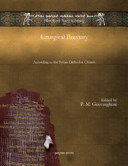
Liturgical Breviarty: According to the Syrian Orthodox Church

Banquete de los eruditos Libros XI-XIII
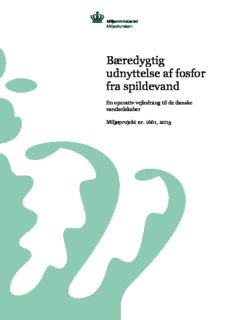
Bæredygtig udnyttelse af fosfor fra spildevand

bâtiment île-de-france
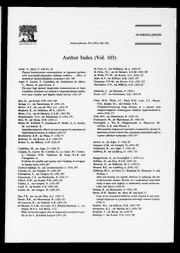
Atherosclerosis 1993: Vol 103 Index

A 3000 leggyakoribb angol szó
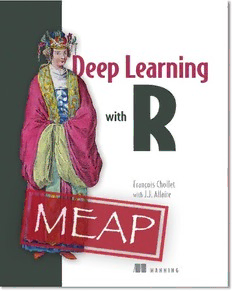
Deep Learning with R
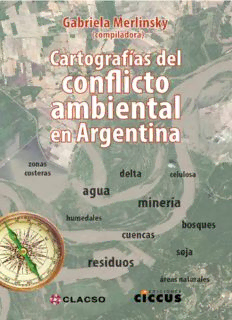
CARTOGRAFÍAS DEL CONFLICTO AMBIENTAL EN ARGENTINA

CA Clarity PPM Accelerator for the PMBOK Product Guide - On

Annual report : 2005/2006

MK News, January 11, 2012
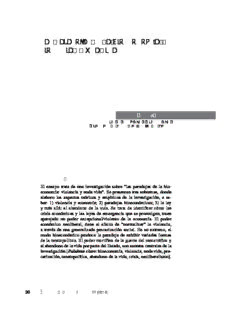
Las paradojas de la bioeconomía: violencia y nuda vida

Voting and Elections the World Over
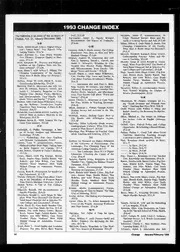
Change 1993: Vol 25 Index
